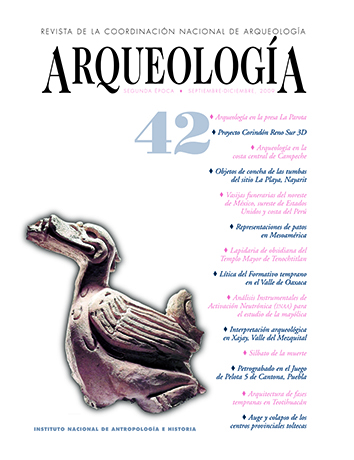Ritual use of pottery: the case of funerary vessels of northeastern Mexico and southeastern United States coast of Peru
Abstract
The objective of this research is to explain why human head-shaped vessels were made with attributes related to death in such a similar way in these three regions. The challenge is to clarify how those ideas were transmitted, considering that direct contacts might have been almost impossible, especially between the first two regions and the Peruvian coast, due to the distance separating them. However, clearly there were direct relations between northeast Mexico and the southeast of the United States. I believe the explanation resides in stylistic convergence. Archaeology has several theoretical and methodological approaches to shed light on these questions. I propose to analyze the following aspects: object function, archaeological context, chronology, style, and iconography. Through the conjunction of different components, it will be possible to know more about the societies that created these trophy vessels.



